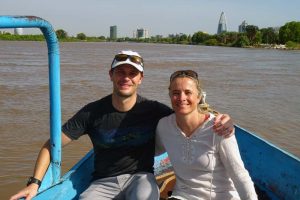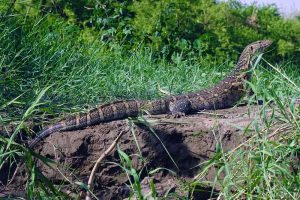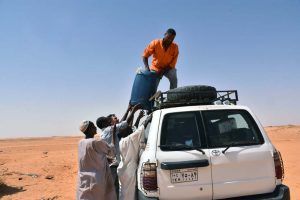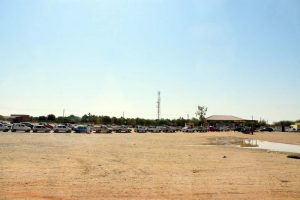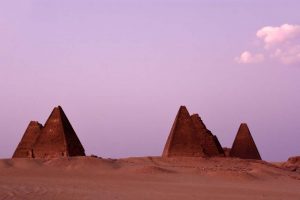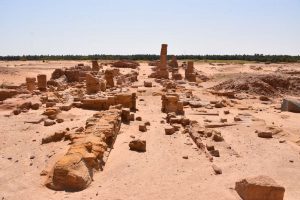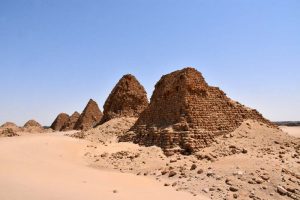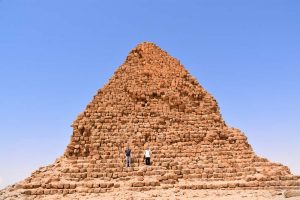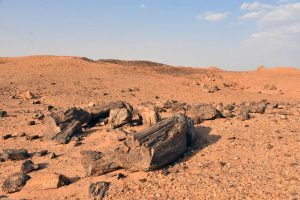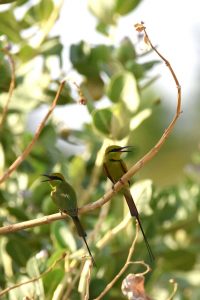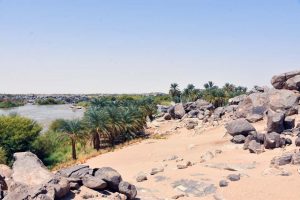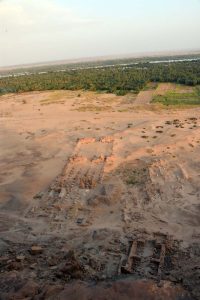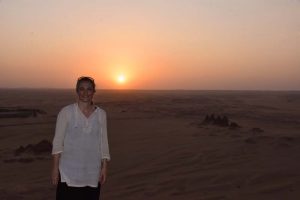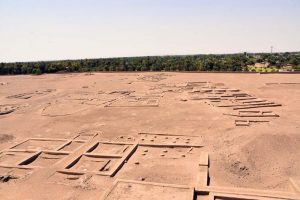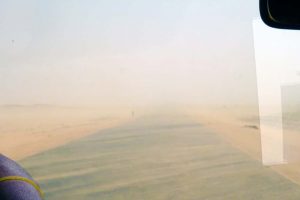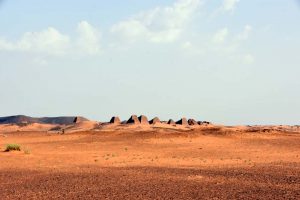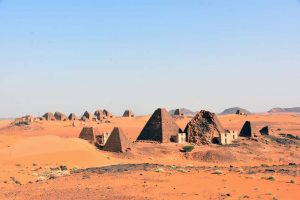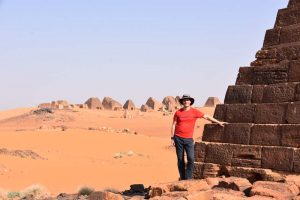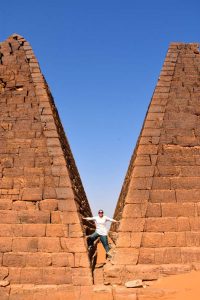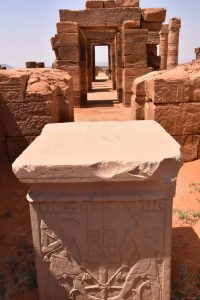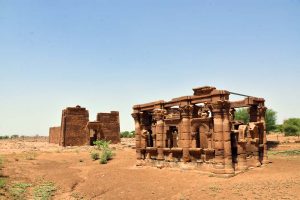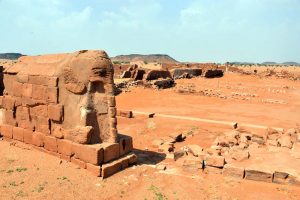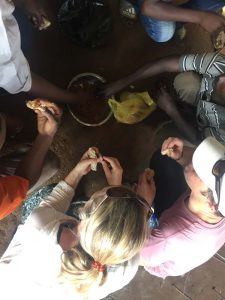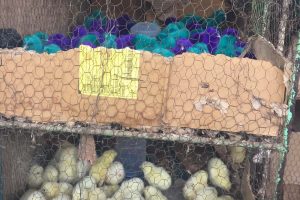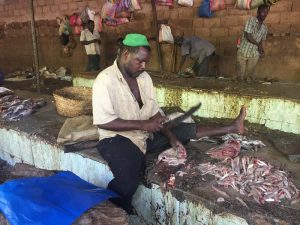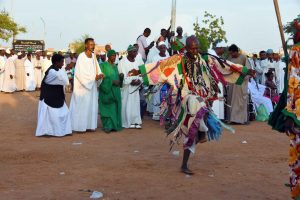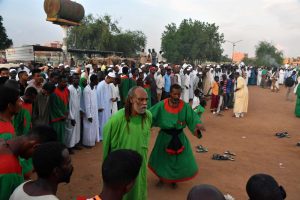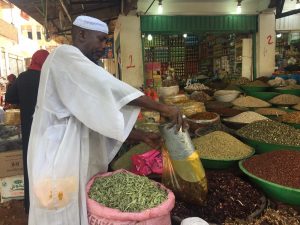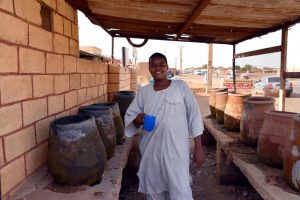Sudan
Land of a recent revolution, land of incredible history, land of hope, land of warm, honest and friendly people, land of desert and heat, land of pyramids, land of the Nile, and a land where the underwater world is still pristine and untouched.
We had been trying to get to Sudan for a little while, the pyramids were high on our wish list, but a week before we were planning to go, the revolution started. It was best to wait a little. Temperatures in the north of Sudan are also incredibly hot in summer, so when the new season opened in October and peace and quiet had returned to this huge country, we were ready to go. Sudan was the largest country of Africa before the separation of South Sudan, and now still sits in third place (do you know number one and two?!).
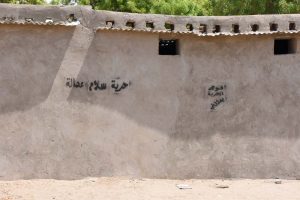
slogan of the Sudanese revolution from earlier in the year painted on a wall – freedom, peace and justice. Let’s hope the deserving people of Sudan get what they asked for
Booking our trip was easy, but getting our visa wasn’t. Despite the fact we had (the only) reputable tour company sort it out for us, we ended up collecting our visa from the Sudanese embassy in Dar es Salaam on the day we were flying out… They were very helpful, but unfortunately getting the authorisation code from Sudan was tricky.
We nearly missed our connection in Nairobi as Kenya Airways had kindly decided to cancel our original flight. The replacement landed 10 minutes after (!) boarding had already started for our connecting flight to Khartoum. We positioned ourselves at the door of the plane, and when it opened we ran through the health screening, down to the security check and on to the gate. Luckily somebody asked us which flight and told us the new gate number otherwise we would have run in the wrong direction… we made it. They were checking in the last passenger when we screeched to a halt, out of breath but happy the bus to the plane was still there. Two minutes later it left.
On arrival in Khartoum our bags hadn’t made the connection and we filled in some paperwork. It was two in the morning and we were keen to get to bed. But, after our drive to the hotel and check-in, we had to wait a little longer. The card key of our prepared room didn’t work… eventually they put us up in another room and we could flop on the bed and sleep.
Hameed, our guide extraordinaire, picked us up in the morning with Saddam (our driver in Khartoum), showed us around town, and took us on a boat trip on the Blue Nile down to the point where the Blue Nile meets the White Nile and becomes The Nile.
Unfortunately there had been a death in the wrestling community that day, so there was no wrestling, but we went to a concert of Samira Dunia instead. Very interesting to see. Lots of young people, but also families (including tiny kids), with some soft drinks sitting around tables listening to this lady sing. We didn’t last long as it was already 10pm by the time it started and we were still feeling the lack of sleep from the night before and needed to get some more before heading into the desert the next morning.
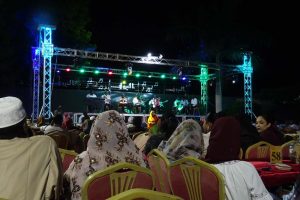
when you buy a ticket you are allocated to a table number where you sit and enjoy the alcohol-free concert
On our long drive up to Karima, a small town in Nubia, we managed to find some fuel on the black market after our lunch stop. This was a result of the revolution, and was proving tricky during our trip. We saw only a few petrol stations with very long queues where they had some, but most looked deserted.
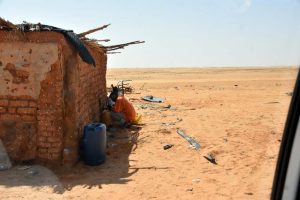
this little shack provided us with much-needed fuel from the black market, this was a deliberate ploy from those running the distribution lines to create chaos after a peaceful transition to a post-revolution government as they are afraid to loose their easy income (bribes)
We arrived at Karima at sunset and admired the remaining pyramids in front of Jebel Barkal before enjoying a fantastic meal at the Nubian Guesthouse right next to Jebel Barkal. Still no sign of our bags…
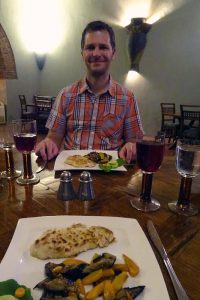
a delicious dinner with Nileperch at the Nubian Guesthouse, and no, that is not wine in our glasses but karkade. Sudan is an alcohol-free country
The next morning our tour started on foot. First we visited the small but interesting museum before exploring the ruined temple of Amun, complete with double rows of ram-headed sphinxes leading towards the entry (although only the most weathered ones are left on site, the better preserved ones are in museums).
Our next stop was the Temple of Mut, the divine mother and wife of Amun, cut into the mountain by the black pharaoh Taharqa around 2800 years ago. The temple is located there so the pinnacle above it represents the white crown of upper Egypt. Inside colourful paintings and hieroglyphs can still be seen, it is super impressive.
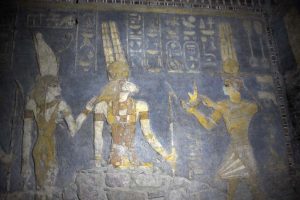
inside the temple of Mut the paintings created by black pharaoh Taharqa more than 2,800 years ago, are still visible in colour, very impressive
After walking through the royal cemetery on the Jebel Barkal side, where most of the 40 pyramids have crumbled, we drove to the other side of the Nile where Taharqa is buried – the Nuri Royal Cemetery. Around 20 pyramids can be seen, built between the 6th and the 3rd century BC. You can still see the inner pyramid of Taharqa, the outer used to be 60m tall. This place was spectacular. So many pyramids, and we were the only ones wandering around and admiring them.
But the day didn’t end there. We visited the tomb of Tanutamon, the last of the black pharaohs, buried in the necropolis of El-Kurru. It is the only tomb open to the public at the moment in Sudan, and it is spectacular. He ascended the throne in 644BC and ruled until 655BC. Inside his tomb the walls are still covered in paintings of gods, and hieroglyphs are found everywhere, the ceilings are covered in stars and in the actual funerary chamber you can even still see the faded blue background (this would have been dark blue at the time).
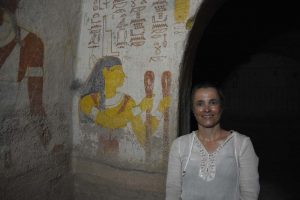
it is very hot in the tomb of Tanutamon, the last of the black pharaohs in the necropolis of El-Kurru., the paintings and hieroglyphs are amazingly well-preserved
Despite the fact the temperature outside in the sun was well into the 40’s, it felt cool after ascending the stairs back into daylight. We had been sweating buckets in the tomb! Before relaxing with a glass (or three) of karkade (a delicious cool drink made of hibiscus flowers) at the guest house, we had one final stop. The petrified forest in the Nubian desert where we found dozens of trees turned into stone. Amazing. Unfortunately there was still no news about our bags. Nobody at Kenya Airways seemed to know where they were…
Our fuel tanks were nearly empty and fuel had to be found. Scouting around town, Murhada (our driver) had not found any, so the next morning we left a little earlier to head to Dongola, another town, where we found a petrol station that had fuel. There were two rows of about 150 cars each, plus several motorbikes and tuktuks (they seemed to get priority for filling up as their tanks are very small). We drove to the front and Hameed got out. He negotiated and talked to the military stationed there to make sure no fights would occur. About 20 minutes later we received a nod, somebody walked away and waved us into the front of the queue. Driving around with tourists means you get priority for fuel!
107 litres later, after shaking the vehicle to add another 10 litres or so after it was full, we were on our way to an ancient quarry where they had left an unfinished (or damaged when fallen?) statue of Taharqa. We checked out the cataracts of the Nile, found a new bird species, and drove on to Kerma.
Kerma is one of the largest archeological sites in Sudan, and is the ancient capital city of the Kerma culture which began around 5,500 years ago. The city is built around the Deffufa, a mud brick temple where ceremonies were held on top. We stood on top of these 5,500 year old mud bricks and had a great areal view of the ruined town below where they have created the outlines of the buildings with mud bricks. That helped a lot with seeing it all before us. It was midday though and super hot, we were melting and sought refuge in the excellent museum next to the town. Inside are many artifacts found in Kerma, but also the seven statues of the five black pharaohs found recently (2003) near Kerma.
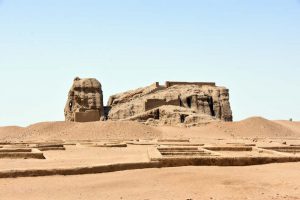
the Deffufa of Kerma with remains of the ancient capital city visible around it, the Deffufa is a mud brick temple where ceremonies were held on top. Kerma is one of the largest archaeological sites of Sudan
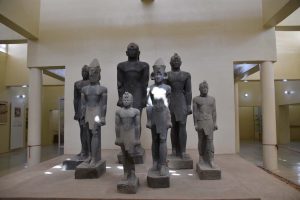
in 2003 archaeologists found 7 statues of black pharaohs in a pit near Kerma, they are displayed at the museum in Kerma
Returning to the Nubian guesthouse that afternoon there was some exciting news, the bags had arrived on last night’s flight (despite the fact no one at Kenya Airways knew about this) and had been picked up by our tour company from the airport. They had been sending a driver to the airport each night to see if anything had arrived even though they had not been told the bags would be there. After picking up the bags at 2 in the morning, they had brought them to a bus station in Khartoum and loaded them on a bus – unaccompanied – with the request they should be transferred onto the bus to Karima once it reached its destination. There was no bus waiting to go to Karima, so they found a stranger with a car who was going to Karima and was willing to take our bags. But, about 20km before he reached Karima his car burst into flames! He managed to get out unharmed, and grab his own luggage as well as our bags and somehow contacted the guesthouse. Abu, the local manager, went out to pick him up, as well as our bags. After dinner that night we were surprised by the delivery of both our bags! We had some clean clothes again 🙂 Our bags had had quite a journey! And it was wonderful to realise that we were in a country where it is still possible to trust people…!
Another big driving day followed, and again we had to look for fuel too. After a stroll around the market of Karima, we drove across the desert, encountered a bit of rain, and arrived in Atbara for lunch at the railway museum. No fuel had been found yet and we tried again with the help of the Ministry of Tourism and a special letter, but weren’t successful. On our way out of Atbara we found another station with fuel, and less cars waiting – maybe around 40. We drove to the front again and this time we hardly had to wait, 5 minutes later we were filling up with another 100-odd litres. We now had enough to get us back to Khartoum.
And then we spotted the Meroe pyramids from the road…. Wow. Even more amazing then the pyramids we had already seen. Hameed knew all the good spots for taking pictures, so we just followed him around and even managed some pretty cool sunset pictures. That night we experienced a desert storm, complete with gale winds, sand blasting, thunder and lightning, and a huge downpour, all in 20 minutes or so. The build up to it was epic to watch, the result a little less (one wet bed and everything covered in a fine layer of sand, including everything inside our tent and our bathroom).
Of course we explored the pyramids properly the next day, they were spectacular. With many having beautiful, thousands of years old, hieroglyphs inside chambers and on the outside of the temples. Again we had the whole place to ourselves….
We weren’t sure if we would be able to visit Naqa and Musawwarat es-Sufra as the rain turns the clay-desert into treacherous mud pits, but we managed to find a way, weaving away from tracks when necessary. The sites again were very impressive and totally deserted bar a lone watchman.
Naqa is an ancient city and religious site from the Kingdom of Kush. We checked out some of the ruined remains, including a large temple for Amun (the King of Gods) and the Lion Temple (Apedemak). After lunch at Musawwarat es-Sufra, we also explored the Lion Temple there, which has been totally rebuilt in in the 1960’s. The Great Enclosure is totally ruined and only low walls remain standing of this maze of buildings and courtyards. It is huge though, 45,000m2, and we walked around, admiring the sculptures of elephants and other animals, and the graffiti left here by travellers and explorers over the years.
From here we drove back to Khartoum where we spent our last day exploring the museum and the huge markets where we discovered the Sudanese love for keeping pet birds, and shared a meal with some random guys who invited us to eat with them as we walked past. We picked up lunch from a local restaurant where you pay for your order, and then take your token to the chef who prepares your pita stuffed with falafel just the way you like it.
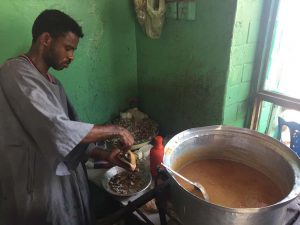
our chef prepares our pita bread filled with falafel after handing over the token we bought from his colleague at the front of the restaurant
In the early afternoon we set off to the tomb of sheikh Hamed al-Nib, a 19th century Sufi leader, located inside a large Islamic cemetery in Omdurman, another area in town. There we shared tea and biscuits with local families until the Sufi dervishes arrived and performed their weekly ritual called dhikr, in front of the tomb. There was a lot of swirling, a lot of singing, plenty of insence and some great tunes being played. And we swayed to the music whilst watching the dervishes swirl their brightly coloured patchwork jallabiyas around and round till they reached trance state. And then it was over, quite suddenly, and the dervishes disappeared into the mosque to continue praying, we joined the throngs of people heading out of the cemetery, chatting and laughing with the locals who had also come to watch this interesting spectacle.
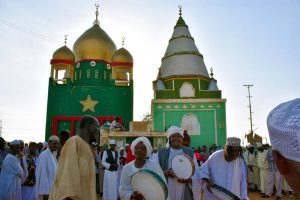
near the tomb of sheikh Hamed al-Nib, located inside a large Islamic cemetery in Omdurman, the Sufi dervishes gather every Friday to perform their ritual dhikr. This merry band of musicians was collecting donations before the dervishes arrived
We asked to be dropped off at a local fish restaurant recommended by a friend of a friend who used to live here. It seemed a much nicer option then eating in our hotel. The food was delicious and we enjoyed their juices too whilst watching the comings and goings of the local families and couples around us. We took a taxi to the hotel, gathered our bags and waited for our lift to the airport several hours later. We were on the only flight to Nairobi which was unfortunately a red-eye flight…
We loved Sudan and can highly recommend going there for a holiday. We only saw a small part of this beautiful country and have already found at least one reason to head back as the coast of Sudan has spectacular diving and snorkelling in another of its Unesco world heritage sites: Sanganeb Marine National Park and Dungonab Bay – Mukkawar Island Marine National Park. If you want to go, get in touch with ITC, they can put together a personalised itinerary and are the best in country.
A Few Fun Facts about Sudan
In Sudan people pay 28 SDG, Sudanese Pounds, for a gallon of petrol. That is about 22 cents per litre (AUD) or 0.14EUR.
Despite the fact that the USA imposed sanctions on Sudan in 1997, they made an exemption for the export of gum Arabica. Strange I hear you thinking? Not if you know that Sudan is the world’s largest producer of gum Arabica, and the USA could not bear having to go without it. Not only is it used in paints, cosmetics and pharmaceuticals, as well as in icings, fillings, soft sweets and chewing gum as a thickener, it is also used in soft drinks like Pepsi and Coca Cola where it stops the sugar from separating and sinking to the bottom. They said a sanction on gum Arabica would have hurt the USA’s food industry…
Roselle, or hibiscus flower, is known in Sudan as karkade. Sudan is considered as the country where karkade originated. The USA prefers to import the dried flowers from Sudan as it has the best quality, but due to the sanctions it cannot buy them direct from Sudan. Instead it has to buy the karkade via Germany, at a considerable mark-up, as they purchase most of the Sudanese crop. Perhaps another exemption was considered?
In December of 2019 Sudan’s transitional government overturned a moral policing law that criminalised certain clothing for women and drinking alcohol.
‘Tombac’ is the name for a tobacco the youth of Sudan place in their mouths, just under the lips. It is similar to ‘snus’ which is very popular in Sweden and other Scandinavian countries.
In case you were wondering and didn’t want to look it up, the two bigger countries in Africa are Algeria and the DRC. Sudan is now third biggest after splitting off South Sudan.
Women are starting to become more and more important in politics as Mr Abdalla Hamdok names his cabinet.
Getting a visa for Sudan is much easier (if you book with ITC) in places like Europe as no authorisation code is required.
Sudan has an ingenious system of clay pots that are located everywhere. In the pots is water for all to use for drinking. Locals keep the pots topped up and clean, and often a cup is found next to them for ease of use. No need for plastic bottles here, fantastic!

